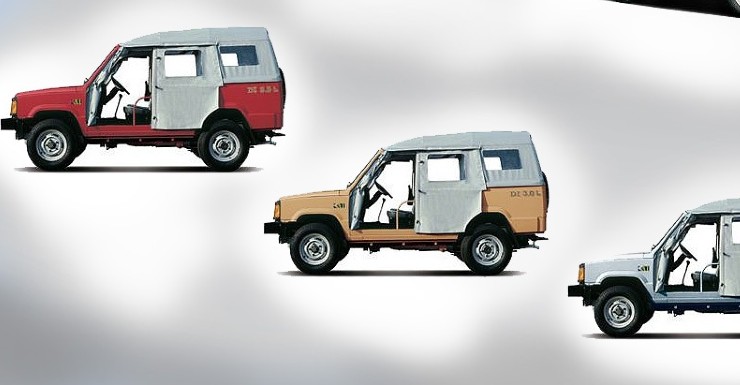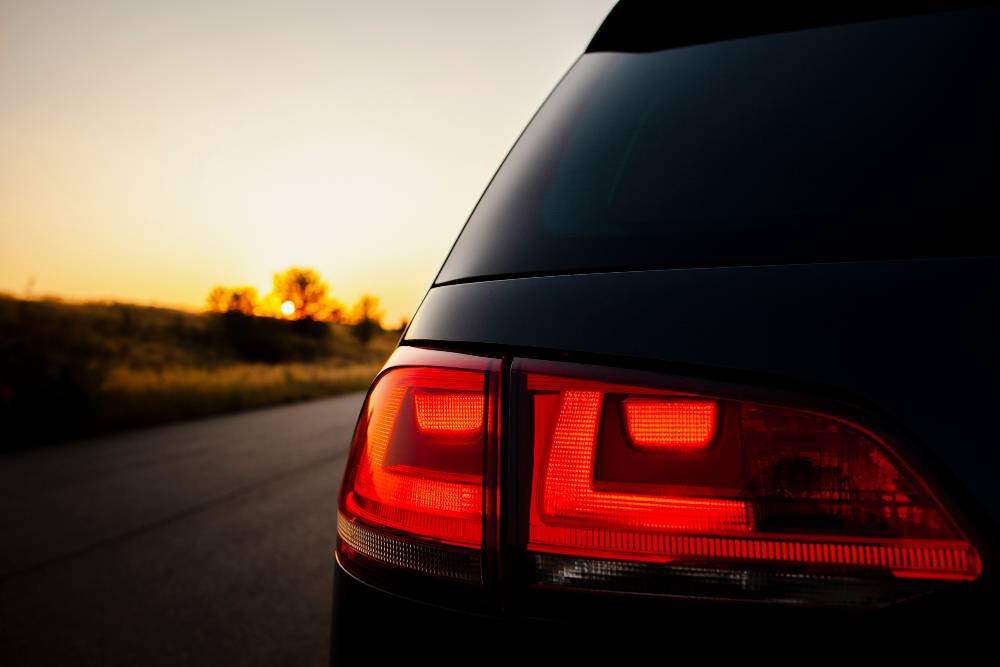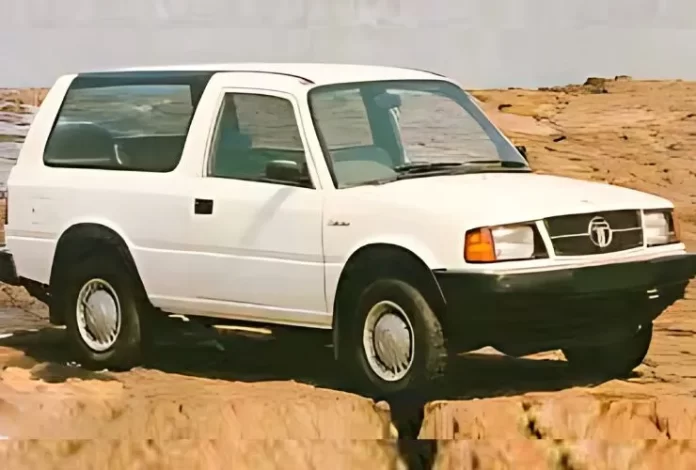Tata Motors currently ranks among the top carmakers in India. It has a wide variety of products on offer- spread across petrol, diesel, CNG and electric powertrains. Most Tata models- like the Harrier, Safari and Nexon are well-respected and in high demand today. Tata’s rich heritage as an automotive brand, however, spans several decades and includes several iconic models. Tata Motors had started their journey as a truck manufacturing company which over time, forayed into making passenger vehicles- both cars and SUVs. Here are 12 Tata cars and SUVs that are gone and forgotten.
1. Tata Sierra
Tata Sierra holds the title of being India’s first homegrown compact SUV, launched long before the SUV craze took over here. Introduced in the 1990s, the two-door Sierra was a bold move by Tata Motors. It was equipped with a distinct, futuristic design featuring large glass panels for the rear passengers, offering panoramic views. This was a design choice unheard of at the time. Tata even had a 4×4 variant of the Sierra on sale.
However, Indian buyers then were not willing to spend huge sums for an SUV so unique and ‘uncommon’ at that time. The Sierra thus flopped. It however, enjoys a cult following as we speak. Tata’s pioneering spirit and boldness to embrace the uncommon are respected by many today.
2. Tata Estate

Another ‘ahead of its time’ product from Tata Motors was the Estate- a station wagon based on the Tata X2 platform. India never really had a thing for station wagons, except for a select few enthusiasts. The Estate was powered by the 1.9 L Peugeot XD88 diesel I4 engine and had visual resemblances to the Mercedes W124 Wagon. Decades later, we would have passionate enthusiasts modify the Estate to look like the Mercedes Wagon, like this guy. There would also be true purists who would restore it into pristine condition. But back then, the Estate was another big flop for the Indian manufacturer. Also, many parts and components were shared between the Estate and the Sierra. Despite its premium positioning and visual similarity with the W124, many were of the opinion that it felt crude inside.
3. Tatamobile

Continuing to experiment with various products and bodystyles, Tata introduced the Tatamobile, a lifestyle pick-up truck based on the Estate’s platform. Launched in the 1990s, it was one of the first attempts to cater to a niche segment that didn’t yet exist in India – lifestyle pickup trucks for personal use. The vehicle saw limited success and was primarily used by commercial operators rather than private owners. In hindsight, it was a bold attempt that was again, ahead of its time.
4. Tata Safari Petrol

The Safari has been a legendary model for Tata Motors. First launched in 1998, the popular version of it had a torquey diesel engine. But very few people would know that the SUV has had a 2.0-litre naturally aspirated petrol version in its lifetime. This engine used to generate 135hp.
At a time when the SUV market was dominated by diesel engines, particularly for off-road-capable vehicles, the petrol Safari didn’t stand much of a chance. Buyers in the segment preferred the robust torque and fuel efficiency that diesel engines offered, and as a result, the petrol Safari quietly disappeared from showrooms.
5. Tata Safari 3.0 DICOR

Most people would remember the popular 2.2-litre DICOR version of the Safari. But Tata had also had a 3.0-litre diesel variant on the Safari. This was in response to growing competition from the Mahindra Scorpio, which had entered the market in 2002. The 3.0-litre engine was borrowed from the Tata 407 truck, was less refined than its competitors, but was torquey. The 3.0L DICOR Safari was soon replaced with the 2.2 DICOR and is a rare find today.
6. Tata Magna

It remains to be seen how many of you would have even heard of this car. The Magna was a premium sedan project that Tata Motors internally called by the name ‘Midica’, showcased at Auto Expo 2000. A potent competitor to the Accord and Sonata back then, the Magna was built on the 207’s platform! It used the 2.2 DICOR engine from the Safari. It is said that Tata even had plans to bring out a 3.0 L version – a ladder-frame sedan with a truck engine! The Magna, however, never made it to the production line as the project was found to make little sense in a market dominated by the Accord and Camry.
7. Aria
 The Aria was the Estate’s spiritual successor and was based on the 2006 Xover concept. Launched in 2010, it was jointly developed by Tata and Jaguar Land Rover. It was powered by the new 2.2L Varicor DOHC diesel turbo I4 engine that produced 150 hp and 320 Nm. It offered both 4×2 and 4×4 variants. The Aria was, however, not a success commercially and was soon succeeded by the Hexa.
The Aria was the Estate’s spiritual successor and was based on the 2006 Xover concept. Launched in 2010, it was jointly developed by Tata and Jaguar Land Rover. It was powered by the new 2.2L Varicor DOHC diesel turbo I4 engine that produced 150 hp and 320 Nm. It offered both 4×2 and 4×4 variants. The Aria was, however, not a success commercially and was soon succeeded by the Hexa.
8. Tata Indigo Marina

The Marina was another station wagon from Tata Motors- this time, based on the Indigo sedan. It was extremely spacious, offering a large boot and comfortable interiors, making it ideal for long family road trips. However, it couldn’t ignite much interest among Indian buyers who generally preferred sedans and SUVs over station wagons. Interestingly, Ratan Tata himself owned a customized Indigo Marina, which he used to drive around with his beloved dogs.
9. Tata Indigo XL

The Tata Indigo XL was an extended wheelbase version of the Indigo sedan, designed to offer more legroom and comfort than any other car in its segment. In fact, it had more space than even the Honda Accord of its time. It found a niche audience in the commercial sector, particularly among chauffeur-driven car owners and in the fleet segment. However, it didn’t perform as well as a personal car, due to the perception of Tata vehicles being more utilitarian than premium, leading to its gradual disappearance.
10. Tata Indigo Manza

In 2010, Tata introduced the Indigo Manza, an updated and more premium version of the Indigo. It featured a more modern design, improved interiors, and was powered by the tried-and-tested 1.3-litre Fiat-sourced diesel engine. Tata positioned it as a competitor to cars like the Hyundai Verna and Honda City. While it was a decent package, the Manza struggled to shake off the utilitarian image associated with the Indigo brand, and it couldn’t quite match up to the more polished offerings from competitor brands.
11. Tata Spacio 3.0

The Spacio was essentially a stripped-down version of the Tata Sumo. Unlike the Sumo, it came with a canvas roof and an open design, making it look almost like a doorless version. It used the same 3.0-litre diesel engine as the Sumo and was designed to carry more passengers, especially in rural areas where large, open vehicles are preferred for their added practicality. However, it was a rare sight on Indian roads and was soon phased out due to low demand.
12. Tata Bolt

The Tata Bolt was introduced as the successor to the Indica Vista, with the hope of reviving Tata’s fortunes in the hatchback segment. It had improved exterior styling, upgraded interiors, and important safety features like ABS and airbags, which were not common in the segment at the time. Despite these, the Bolt struggled to shed the Indica’s image, which had become synonymous with fleet and taxi services. As a result, it failed to attract private buyers and was eventually discontinued.
The post Gone And Forgotten: 12 Tata SUVs And Cars first appeared on Cartoq.
Source link

